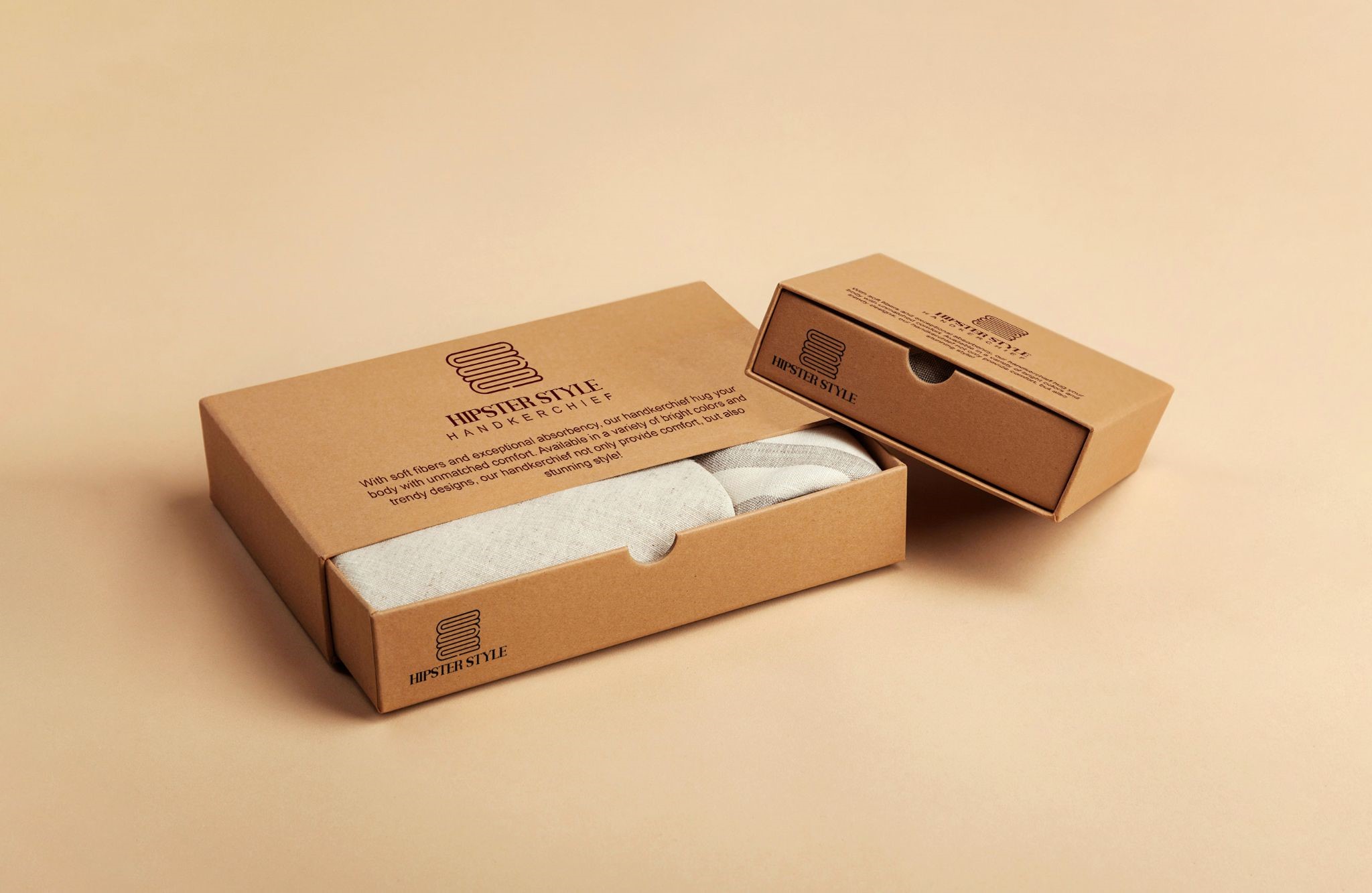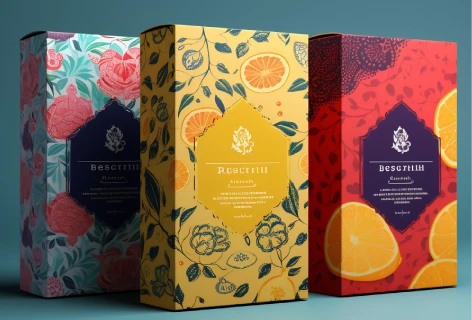Cost-Effective and Sustainable Apparel Packaging Solutions for Fashion Brands

In today’s fast-paced fashion market, packaging is more than a means to protect garments; it’s an opportunity to express your brand’s values, elevate customer experience, and demonstrate environmental responsibility. For fashion brands of all sizes, from independent designers to established apparel houses, the challenge lies in balancing sustainability with affordability.
The good news? With smarter material choices, efficient box structures, and creative printing techniques, fashion brands can achieve both cost-effective and sustainable packaging without compromising on style or quality.
Why Sustainable Packaging Matters in Fashion
The fashion industry has always been about storytelling, color, texture, and presentation. But as consumers grow more eco-conscious, that story now extends beyond the product itself. Apparel packaging now reflects brand ethics, not just aesthetics. Choosing recycled or kraft materials signals care for both the planet and design. Sustainability is now a crucial advantage, enabling brands to connect emotionally and distinguish themselves in a crowded fashion landscape.
Understanding sustainability’s impact is just the start. The key challenge: implementing affordable, eco-friendly packaging while upholding brand values.
Balancing Cost and Sustainability
The misconception that “eco-friendly means expensive” is fading fast. Sustainable packaging becomes affordable when brands focus on efficiency and materials rather than excess decoration or over-engineering.
Here are some strategies that combine environmental responsibility with cost efficiency:
- Lightweight and Custom-Sized Packaging: Reducing packaging weight lowers both material use and shipping costs. Tailoring the box dimensions to fit your product snugly minimizes void space and the need for extra fillers. A custom-sized foldable apparel box or a shirt box made from lightweight corrugated kraft material can protect items during shipping while reducing freight costs and carbon emissions.
- Use of Recycled and Recyclable Materials: Switching to recycled paperboard, kraft stock, or FSC-certified cardboard is a straightforward step toward sustainable packaging. These materials are durable, cost-effective, and widely recyclable. For premium fashion items, consider double-layered recycled board, offering the same luxurious feel as virgin paperboard while reducing the environmental footprint.
- Simplified Structural Design: Complex box structures often lead to higher setup and tooling costs. In contrast, use fold-and-tuck product boxes or collapsible magnetic rigid boxes to ship flat and assemble quickly. These packaging styles not only save storage space but also reduce dimensional-weight shipping costs, an essential factor for e-commerce fashion brands.
- Digital Printing for Short Runs: For limited-edition apparel collections or seasonal designs, digital printing eliminates the need for costly setup plates and allows for small-quantity runs. It’s perfect for startups and boutiques looking to test packaging designs before scaling up. Digital printing also supports variable data, meaning you can easily add personalized touches, QR codes, or localized branding without additional cost.
Although structural efficiency and innovative printing techniques reduce costs, the foundation of sustainable packaging lies in choosing the right materials. The type of substrate you select directly impacts recyclability, shipping weight, perceived quality, and overall environmental footprint.
Eco-Friendly Materials Fashion Brands Should Consider
Choosing sustainable materials doesn’t mean compromising quality. In fact, many eco-materials now rival or outperform traditional substrates. Here are a few that fit both fashion and budget goals:
- Recycled Kraft Paper: Eco-friendly kraft boxes are Ideal for garment boxes, mailing boxes, and protective packaging inserts. Its natural brown tone conveys an organic, authentic feel, making it perfect for lifestyle and casual apparel brands. After use, this material can be placed in paper recycling or reused for storage.
- Post-Consumer Recycled (PCR) Board: Made from recycled consumer waste, PCR board reduces landfill impact while maintaining a smooth, printable surface, making it great for high-end apparel boxes.
- Soy-Based and Vegetable-Based Inks: Soy and vegetable-based inks produce vibrant colors while being biodegradable and easier to de-ink during recycling, reducing contamination in the waste stream.
- Compostable or Biodegradable Coatings: Switching from plastic lamination to aqueous or biodegradable coatings gives your packaging the same soft-touch or gloss feel but keeps it recyclable.
- Reusable Fabric Bags: Many sustainable fashion brands replace single-use packaging with reusable cotton or jute bags. Fabric apparel bags serve as both eco-friendly carriers and long-term brand reminders.
Material selection is just one part of the sustainability equation. To maximize environmental impact and customer value, brands must also consider what happens to the packaging after unboxing. Embrace sustainable design principles now to drive real change and position your brand as a leader in responsible fashion.
Designing for Sustainability: From Box to Brand Experience
A key aspect of sustainable design is creating packaging that lives beyond its initial purpose. Fashion brands can encourage reuse and recycling through thoughtful design and messaging.
- Multi-Use Apparel Boxes: Rigid magnetic or drawer boxes can double as storage containers for accessories, scarves, or keepsakes. This extends product lifespan and reduces waste.
- Encourage Customer Recycling: Add subtle, friendly reminders, such as “Reuse or Recycle Me,” on the underside or inner lid of the box. QR codes can link to recycling guidelines or a sustainability page on your website.
- Minimalist Branding: Clean, understated packaging not only saves ink and production costs but also appeals to the minimalist design preferences of eco-conscious consumers.
Sustainable design doesn’t just benefit the environment; it also opens the door to meaningful cost reductions. By simplifying structures and encouraging reuse, brands can streamline production and shipping expenses. Start integrating these strategies now to keep your packaging both premium and affordable, while making a positive impact.

Cost-Saving Tips Without Compromising Brand Value
It’s entirely possible to design sustainable packaging that looks luxurious without inflating production costs. Here are proven cost-control tactics:
- Use Smart Finishes Selectively: Techniques like foil stamping, embossing, or spot UV create a high-end appearance but should be applied sparingly, focusing on your logo or key brand element for maximum effect at minimal cost.
- Order in Bulk for Core Designs: Consolidate print orders for multiple SKUs into a unified design theme (e.g., a single box structure with color variations). This reduces setup and material costs while maintaining brand consistency.
- Use Paperboard Packaging Inserts: Replace foam or plastic molds with die-cut paperboard or corrugated inserts. Paperboard packaging inserts are cheaper, recyclable, and lightweight, ideal for apparel accessories like ties, belts, or wallets.
By switching from pre-assembled rigid boxes to collapsible kraft apparel rigid boxes with soy ink printing and recycled inserts, a clothing brand can achieve:
- 30% reduction in packaging costs
- 60% reduction in shipping volume
- Zero plastic components
- 25% higher customer satisfaction in post-purchase surveys
This simple material and structural shift doesn’t just save money; it becomes a marketing asset, helping the brand attract environmentally conscious shoppers.
How Sustainable Packaging Builds Brand Loyalty
In fashion, perception equals value. When customers see a thoughtfully designed, eco-conscious package, they associate the same care and quality with your products.
Sustainable packaging communicates more than responsibility; it builds emotional trust. It tells your customers: “We care about how our products look, how they arrive, and the impact they leave behind.” This level of transparency fosters long-term loyalty, especially among younger demographics who actively support green initiatives. Choose sustainable packaging to clearly signal your commitment and build lasting customer relationships.
Brands looking for custom apparel packaging can explore suppliers who provide recycled materials, FSC- stock, and flat-shipped box designs. Printingblue.com is a custom packaging provider that offers sustainable packaging solutions, along with free design support and packaging consultation.
Final Thoughts
Sustainability isn’t a trend; it’s a statement. Make yours visible with packaging that inspires, protects, and performs.
In a world where fashion meets sustainability, your packaging speaks volumes before your product ever does. Cost-effective, sustainable solutions are no longer out of reach; they’re the future of responsible branding.
By choosing more innovative materials, optimizing structure, and designing for reuse, fashion brands can reduce costs, delight customers, and protect the planet, all at once.
Frequently Asked Questions for Eco-Friendly Apparel Packaging
Q: What is the most affordable sustainable packaging option for apparel brands?
A: Many fashion brands search for cost-effective, eco-friendly packaging. The most economical options include recycled kraft boxes, paper shopping bags, and fold-flat apparel boxes. These packaging styles reduce both production and shipping costs while maintaining a premium look.
Q: How can fashion brands reduce shipping costs with sustainable packaging?
A: Users frequently search for packaging that lowers shipping expenses. Brands can reduce freight costs by using lightweight corrugated mailers, custom-sized boxes, and cardboard inserts. These steps minimize dimensional weight and reduce the need for void fillers.
Q: What apparel packaging styles help reduce product damage during shipping?
A: Using paperboard inserts, corrugated supports, and snug-fit apparel boxes provides added protection without foam or plastics and protects the product during shipping.


